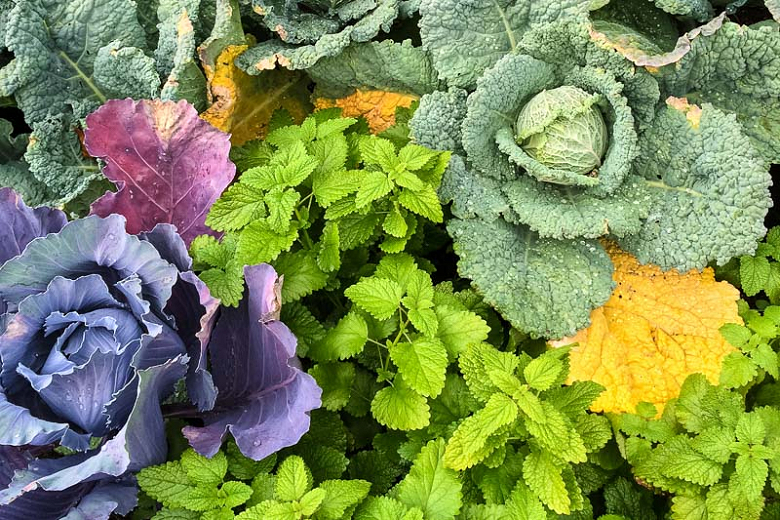Mint And Marigold: The Perfect Companion Plants
Mint and Marigold: The Perfect Companion Plants
Mint and marigolds are two popular garden plants that are often grown together. They have a number of benefits when planted together, including:
- Attracting beneficial insects. Both mint and marigolds attract beneficial insects, such as ladybugs, hoverflies, and parasitic wasps. These insects help to control pests in the garden, such as aphids, cabbage worms, and whiteflies.
- Reducing the risk of disease. The strong scents of mint and marigolds can help to deter pests and diseases. For example, mint can help to repel nematodes, which are microscopic worms that can damage plant roots.
- Improving soil quality. Mint and marigolds can help to improve soil quality by adding nutrients and organic matter. Mint is a nitrogen-fixing plant, which means that it can help to increase the nitrogen content of the soil. Marigolds also help to improve soil drainage and aeration.
- Completing each other's growth cycles. Mint is a fast-growing plant that can quickly take over a garden, while marigolds have a shorter lifespan. By planting them together, you can take advantage of their different growth cycles. Mint can help to suppress weeds and pests while the marigolds are still growing, and then the marigolds can die back and allow the mint to spread.
How to Plant Mint and Marigolds Together
When planting mint and marigolds together, it is important to consider their different needs. Mint prefers full sun and moist soil, while marigolds can tolerate partial shade and drier soil. You can plant them in the same bed, but make sure to give the mint plenty of space to spread. You may also want to consider planting them in separate containers, especially if you have limited space.
Here are some tips for planting mint and marigolds together:
- Plant mint in a sunny spot with moist soil.
- Plant marigolds in a spot that receives at least partial sunlight and has well-drained soil.
- Space mint plants at least 12 inches apart.
- Space marigold plants at least 6 inches apart.
- Mulch around both plants to help retain moisture and suppress weeds.
Conclusion
Mint and marigolds are two great companion plants that can benefit each other and your garden. By planting them together, you can attract beneficial insects, reduce the risk of disease, improve soil quality, and complete each other's growth cycles. With a little planning, you can enjoy the benefits of these two plants for years to come.
Mint and marigolds are two of the most popular herbs in the garden, and for good reason. They're both easy to grow, versatile, and have a variety of benefits. But did you know that they're also great companion plants?
Marigolds attract beneficial insects like ladybugs and hoverflies, which help to control pests that can damage mint plants. Mint, on the other hand, helps to repel pests like aphids and mosquitoes. When planted together, these two herbs can create a healthy and pest-free environment for your garden.
If you're interested in learning more about mint and marigold companion planting, I recommend visiting Gardenia Inspiration. This website has a wealth of information about companion planting, including specific tips for planting mint and marigolds together.
FAQ of mint and marigold companion plant
- Are mint and marigolds good companion plants?
Yes, mint and marigolds are good companion plants. Mint is a strong-scented herb that can repel pests, while marigolds attract beneficial insects that prey on pests. Additionally, both mint and marigolds have similar growing requirements, such as full sun and well-drained soil.
- How far apart should mint and marigolds be planted?
Mint is a vigorous grower and can quickly spread out of control. To prevent this, it is important to plant mint at least 18-24 inches away from other plants. Marigolds, on the other hand, are not as aggressive and can be planted closer together.
- What are some other good companion plants for mint?
In addition to marigolds, some other good companion plants for mint include tomatoes, carrots, beans, and cucumbers. These plants benefit from mint's pest-repelling properties and can also help to improve the flavor of mint leaves.
- What are some plants that should not be planted near mint?
There are a few plants that should not be planted near mint, including strawberries, potatoes, and brassicas. These plants can be susceptible to pests that are also attracted to mint.
- When is the best time to plant mint and marigolds?
Mint and marigolds can be planted in the spring or fall. If you are planting them in the spring, wait until after the last frost. If you are planting them in the fall, plant them at least six weeks before the first frost.
Image of mint and marigold companion plant
5 different images of "mint and marigold companion plant" from Pinterest:
- Image 1: A pot of mint and marigold plants growing side by side in a garden. The mint plants are green and leafy, while the marigold plants are bright orange.

- Image 2: A row of mint and marigold plants growing in a vegetable garden. The mint plants are taller than the marigold plants, and they have a more spreading growth habit.

- Image 3: A close-up of a mint and marigold flower. The mint flower is small and white, while the marigold flower is large and orange.

- Image 4: A butterfly nectaring on a marigold flower in a garden with mint plants. The marigold flower is a popular nectar source for butterflies.

- Image 5: A bird eating a marigold seed in a garden with mint plants. Marigold seeds are a food source for birds.

Post a Comment for "Mint And Marigold: The Perfect Companion Plants"